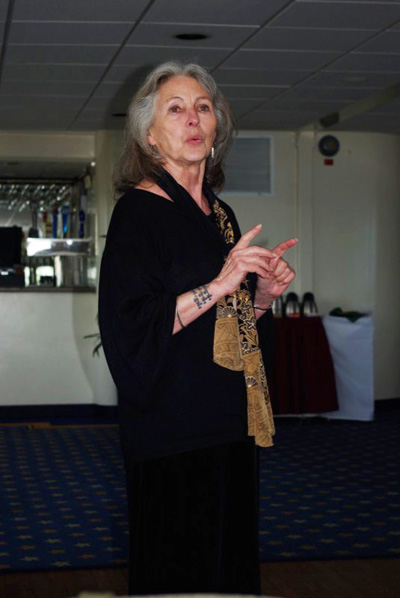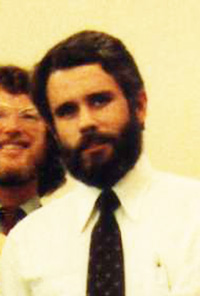 Remembering CCV – Coordinator of Instruction and Advisement (1980-83), Director, Western Region (1983-85)
Remembering CCV – Coordinator of Instruction and Advisement (1980-83), Director, Western Region (1983-85)
I moved to Vermont in 1979 when my wife, Dr. Laurel Church, accepted a visiting professorship at the University of Vermont. In this tag-along situation I taught speech at UVM in the fall of 1979, along with working on a number of editing and publishing projects left over from my business in Illinois. During that fall term I got a call from the Student Activities office at UVM wondering whether, pretty-please, would I help out a student who was attempting to restart the yearbook at the University. In due time I found myself serving as yearbook advisor, working with the editor, Alida Bryant, who often seemed hard to find because, as she explained in her rapid-fire Boston fashion shehadaninternshipatCCVinStAlbans. Once I translated I learned that, yes, there was a community college system in Vermont, that it worked out of regional offices throughout the state, the nearest one of which was in St. Albans, 28 miles north of Burlington, where I lived.
When Alida learned I had a doctorate in English she shifted into full recruiter mode and got me to agree to teach a couple of classes for CCV, and, although she tried to get me teaching locations near Burlington, she made veiled references to some mysterious prohibition on actually holding CCV classes in the city itself. For the spring semester of 1980 I ended up teaching a developmental composition class in the VFW hall in Milton, 9 miles north of Burlington, and a class in Modern British Literature in a public school classroom in St. Albans. The mileage to and from was more than an academic consideration, since the compensation was a princely $234 per class.
The Modern British course was one I had taught before at other schools, and was even related to my doctoral specialty; one might remark, however, that it might be the first and last time that Lady Chatterley’s Lover received an in-depth treatment in St. Albans, Vermont. The Developmental Composition class was a bit more of a challenge. I had never taken a composition course in my life, since I placed out of it as an undergraduate, and I had only taught it a couple of times before, in a very different institution, and as a regular freshman comp. course, not as a remedial exercise. When I showed up at the VFW hall, I found a group of ten tough-looking women and one very scared male veteran, possibly a bit the worse for Agent Orange. Before I could introduce myself, one woman asked “You married?” “Yes.” “Shit. Just my luck.” It was more or less uphill from there. In fact, that was one of the first Vermont language facts I learned. After having the students write a bit about “why they were there” (did I need to ask?) so I could gauge their existing writing skills, I found I needed to go back to square one with the exercises I set them. One that worked well was to have them write out directions for getting from their homes to the classroom. That’s when I discovered that Vermonters may not necessarily know “east” or “north,” but they do know “up” and “down,” and these words appear much more often in driving directions there than they do, for example, on the Illinois prairie.
In the process of setting up the courses, I got to meet Pixley Hill, who said she was “the CIA in St. Albans.” I knew that St. Albans had the distinction of being the site of the northernmost battle of the Civil War, but I didn’t know they had their own intelligence service. Anyway, as the Coordinator of Instruction and Advisement, Pixley was the (CCV) law in town—obviously doing a lot of things (hiring instructors, ordering textbooks, evaluating transcripts, arranging veterans’ benefits, filing financial aid forms) that would have occupied about a dozen people in a traditional school. This began to look interesting (I bore easily). During the semester, Pixley mentioned that the college was adding a second CIA in St. Albans that year, and in due course I applied. I was also applying elsewhere, and was offered a faculty position at Clarke College in Iowa, but Laurel was offered an extension of her visiting professorship at UVM, and since she also offered to leave me if I took the job in Iowa, it “worked out” for me when I was hired by CCV starting in the fall of 1980.
At the time, the St. Albans CCV office was in space shared with the Agricultural Extension Service. The downside was that we had only two tiny cubicles and some shared space to meet students, provided our schedule didn’t conflict with a session on re-using canning jars. If there was an upside, it was that government offices shut down at 4:00 p.m., so we had an excuse for a comfortably short work day. But business was booming and the first order of business that fall was to find larger quarters. We looked at a number of unpromising premises that met the criterion of low rent. (One was a gutted shell of an old municipal building, where our offices would be on the second floor. When we pointed out that there would need to be an elevator to meet accessibility requirements, the landlord snorted, “Elevator’s $40,000…hell, for that I could buy a forklift.” It was unclear whether he thought the forklift would alleviate the need for an elevator. In any case, we kept looking.) We finally settled for a one-story building on Main Street, an 1860s feed store that had undergone a number of transmogrifications, most recently as the home of the local telephone company. Once it became the home of CCV, we (almost affectionately) dubbed it Hungerford Hall, in honor of the landlord, who, it was rumored, had won it in a poker game. We moved in time for the Spring 1981 semester, luxuriating in our own private offices, a large front lobby, secretarial space, and a couple of sort-of classrooms, thus slightly reducing our dependence on rented space in the community.
In the friendly confines of Hungerford Hall, Pixley and I were joined by the newly hired Special Services Coordinator, Joan Kay, and secretary Suzy Campbell (her day job: she and her husband were also the official keepers of the Swanton swans, a present from Queen Elizabeth II). Special Services was a federally-funded program to meet the needs of under-served college populations and those with multiple obstacles to success in college—a definition that pretty much fit every CCV student. The program director, Roger Cranse, built some remarkable educational features into the two-semester sequence of coursework, based on liberal arts principles. However, for some students, the issues were more down-to-earth. Joan reported that, when she explained to one student that the goal of the program was to help remove the obstacles to getting a college education, the student asked whether it would pay for fixing the brakes on her car, since that was the main thing that was keeping her from getting to class.
As I’ve noted, in that era CIAs did everything—it could be a steep learning curve. What does that stuff on a DD214 mean for a degree-seeking student? What’s transferable from an out-of-state school you’ve never heard of? When should a student be encouraged to fill out financial aid forms? The answer to the last one was easy: 100% of CCV students were poor enough to qualify; in fact, 100% of the forms came back for verification because the computer in faraway Iowa couldn’t believe that anyone could live on so little income. Little did they know Vermont.
Then, of course, there were all the “other duties as assigned.” Setting up the curriculum each semester—what we offered was determined not only by what we thought students might need, but also by who was available to teach. On more than one occasion, Pixley and I went to one or more restaurants in town and went from table to table finding out who had a master’s degree and might like to teach something. The upside was that there were a lot of people in Vermont who had advanced degrees, even teaching experience in higher education, but were hiding out in the boonies doing something else. Once we’d screened and hired some folks, there was also the matter of instructing them in the “CCV way” of doing things. At that point, it was almost better to have people who hadn’t taught in college before, since they were less likely to balk at having to write learning outcomes for the course or design assignments that actually spoke to those outcomes. Those who were “experienced” college teachers tended to come with their own syllabi and their own presuppositions about how to teach. For these we took on an “unlearning” task in some cases. Pay was low. At one point, when faced by a prospective teacher who appeared to be trying to make a living from this, I recall paraphrasing Groucho Marx to the effect that I wouldn’t want any instructor who wanted to teach for our wages. In fact, almost all CCV instructors did it because they enjoyed it—what an opportunity to work with a class of 10 or 12 highly-motivated adults, sharing with them something that you did in your “real life.”
The “as assigned” stuff went on and on. After we opened our very own St. Albans office, there was the matter of equipping it, with almost no budget. Donated tables and chairs, for a start. Then, a copier—in the old office we had shared one with the Extension Service. After much lobbying I was told that the central office in Montpelier was getting a new one and we could have the old one—if we figured out how to get it to St. Albans. Step one was to borrow a battered farm truck from the brother of another CIA and nurse it to Montpelier. Once there, I found the copier ensconced on the fourth floor of a building with no elevator. After finding enough able-bodied colleagues to tug and lift, the next problem was that the copier had protruding legs that were too wide to fit through the doorway of the office. Removing them would require a socket wrench—not standard issue in community college offices. I located a nearby repair shop where I did some fast talking to convince the proprietor to loan me one, leaving my driver’s license as security. Back up to the fourth floor, on my back, crawling inside the bottom cabinet of the copier to reach the bolts. At this point, then-president Myrna Miller (known for her vocabulary) came by and asked what the &*^%$$^ I was doing. “Other duties as assigned.” So, narrowed copier horsed down four flights of slippery stairs and into the pickup. Now back in St. Albans, how to get it from pickup to office—no stairs this time, but all my colleagues suddenly pleading gender disability. I believe I ended up pulling a few bucks out of my own wallet to entice a couple of young loiterers to help me with that final few yards of schlepping.
Publicity for CCV programs had what one visiting accreditor called “a home-made quality.” Indeed. This was before the days of desktop publishing or graphics software, so we often had to design our ads, have the newspaper typeset them, then reshuffle everything to get it the way we wanted it. Posters were usually, in fact, home-made, with clip art, press-apply type, lots of cutting and pasting. Things got a bit easier when the local newspaper, the Daily Messenger (known locally as the Daily Mess), which had been part of the infamous William Loeb/Manchester Guardian empire, was sold to a nice young couple who were actually interested in what we were doing. We wrote articles, fed material to free-lancers, enticed students to write letters-to-the-editor, manufactured events to become news. Radio stations in the area got used to expecting that, a few weeks before the start of each term, we would be calling and cajoling to get some interview time, as well as peddling PSAs—though usually the best deal we could get was one free PSA for each paid ad (we always wondered whether this was normal FCC practice).
Enrollments did grow steadily in St. Albans—usually in ways we wanted. I do recall that, in the wake of the Iranian hostage crisis, we noticed an influx of young middle-eastern-looking men driving expensive cars with out-of-state license plates and desiring earnestly to enroll quickly as full-time students so they could keep their student visas. In most cases, after they had paid cash for their courses, we never saw them again.
The student-centered nature of the CCV enterprise defined both the best and worst aspects of our life as all-purpose academic administrators. I hadn’t been there very long before I learned that no staff meeting was complete without someone or other pounding on the table and shouting, “CCV is NOT a social service agency!” What this meant, of course, was that it most definitely was. There was even an emerging research basis for what we were experiencing, in the work of K. Patricia Cross and her colleagues on the experience of adult students in college. What she found was, simply, students go back to college within 18 months of experiencing one of life’s standard crises: having a child, or having the last one leave home; getting a job, or losing a job; being promoted, or missing a promotion; getting married, or getting divorced; being diagnosed with a life-threatening condition, or recovering your health; becoming addicted to something, or shaking an addiction. At CCV, we saw it all, and learned to accept that students frequently saw us, and their education, as the one thing that was going to save them from whatever was afflicting them in life. We found that when we asked students to write about what they wanted to get out of college, the most frequent answer was not to get a job or make money, but “to make better decisions in my life.” Whatever the proximate crisis was, it had taught the student that her previous decisions were lousy—now, how to make better ones? CCV was, for most of our students, the only available answer.
“Her decisions”—yes, a large majority of our students were female, years ahead of the same trend in the rest of American higher education. And they brought every vulnerability arising from gender inequality in our society—spousal abuse, vulnerability due to lack of marketable skills, situational obesity, substance abuse, miserably-low self-esteem, and all kinds of despair related to failed relationships, failed child-rearing, not to mention intractable economic issues. The amazing thing was the extent to which higher education did in fact address so many of these issues, though not always in predictable ways. It saved some relationships and terminated others. In general, children did better in school when their mothers and fathers were also studying. Some took off weight, while others decided that wasn’t the main problem. Some got off substances, some switched substances. But on balance, I generally concluded that the experience of going to college did far more than put facts in heads—it did help a surprising number of people change their lives in ways that might not have seemed tightly tied to English or math or history. And, in “Corn is Green” fashion, students sometimes did amazing things. Some transferred to prestigious colleges (two I can recall went to Smith). I bought a dozen copies of Virginia Woolf’s “A Room of One’s Own” and began to give them to young women who seemed ready to do something extraordinary with the education that had begun at CCV—most, I think, read it and grasped it, but all said the title alone affirmed what they needed to seek in their lives.
I learned that Commencement at CCV was a peculiar institution in itself: students traveling from all over the state, accompanied by huge numbers of family members—since they were usually the first in their extended families to graduate from college, and CCV put no limits on the number of guests they could bring. And there was the custom of giving each graduate a single rose, which the graduate was, in turn, to present to the person who had been most responsible for the student managing to complete a degree. Not unexpectedly, the rose often went to a parent, spouse, best friend, but sometimes to a child who had helped take up the slack during the years of part-time study. And at times to a CIA; one year, I took home six. Many students were overcome by the emotion of graduating, but I remember in particular one big, strapping state police sergeant who nearly fainted out of shear nervousness at having to walk across a stage “in front of all those people,” as he put it afterwards.
CCV was not a very old institution in those days, less than ten years from its founding when I began working there. And in those few years it had undergone more sea-changes than most colleges do in a hundred years. Instructor pay was laughably low in the early ‘80s, but in the first days it was nonexistent: a collection envelope was passed around to the students and they put in whatever they thought the class was worth to them. I wonder how the W2s were handled? Also, the curriculum and the degree program were entirely competency-based. There were no credits and no grades and a student’s degree portfolio might well include “things” as well as “words”—jars of jam demonstrating cooking competency was an oft-cited example. When the college switched to credits and courses in the more usual sense, sometime in the late ‘70s, all the “old plan” students were supposedly given a deadline to complete their degrees, but still, from time to time, someone would arrive from Burke Hollow or Victory Bog and bring a degree portfolio, literally, in a steamer trunk. Some accommodation was always made for them—they were, after all, the original ancestors of the place.
But in the early ‘80s there still was no such thing as a college catalog, and courses were all pretty much made up out of whole cloth: an introductory composition course in St. Albans didn’t necessarily bear much resemblance to one in Barre or St. Johnsbury. All higher education is sort of a cottage industry, of course, but the variance at CCV was particularly dizzying, since there wasn’t even the usual leaven of a full-time faculty to snarl at each other until they agreed on some kind of pattern for courses. So around 1982 or 1983, sometime after Ken Kalb arrived as president, we spent an ungodly number of months assembling the first more-or-less uniform curriculum, to be ensconced in an honest-to-gosh printed catalog. We read existing syllabi until we were cross-eyed, begged-borrowed-stole catalogs from other schools (sometimes by getting our students to write letters requesting copies, as though they wanted to apply for admission!), argued in endless meetings, sometimes after spreading out dozens of variants of “the same” course on the floor to attempt comparison and collation. There were a few screaming matches with disgruntled instructors who threatened never to teach for us again if we so much as hinted what should be in their courses. In the end, having a catalog and some uniformity to courses probably demystified things a bit for students, perhaps even for the ever-scrambling CIAs.
Up in St. Albans, I was fairly far from the center of power (such as it was) of the Vermont State Colleges system, but we all had some vague sense that we had important support from Richard Bjork, the chancellor of the system. There were numerous Bjork stories floating about, even though most of us had never met him. He was known as a hard-driving, AAAAAAA type personality. At one point, he had been a Coast Guard officer, choosing that service because it was the only one where a young officer could command his own ship. In honor of that time, some of the central office staff gave him a gift of a tie decorated with nautical signal flags. He accepted it graciously, but during the first staff meeting where he wore it, he looked down and deciphered what the flags said: TGIF. He would have preferred more working days in the week, not fewer, and he tore off the tie and threw it away in disgust.
As mentioned earlier, when I began working for CCV there was some kind of unwritten agreement that no classes would be held in Chittenden County, aka Burlington. Putting my composition class in Milton, just inside the northern edge of the county, was sort of an I-dare-you move, not to be repeated. However, around 1983 there began to be noises that the chancellor had said to go ahead and give it a try. The issue was not with University of Vermont (although an interesting contretemps would arise later), but with a number of the private institutions in Burlington, all of which depended on adult degree programs to make the budget. But, in the event, I was assigned to go ahead and work something out.
Initially, I found quarters in the Chase Mill on the northern edge of Burlington, thanks to the fact that another state-sponsored program was being phased out and there was unexpired time on the lease. The office suite was small, and occupancy was tense because the previous inmates were unhappy about being moved out and terminated. At first, I took to interviewing potential instructors at my home, which made some of them nervous. And I had no staff, so I hired a secretary and then went looking for a CIA. At the time, there were a good number of in-house jokes about the fact that nearly all of us on staff were from the Midwest or from New York, and that, therefore, our affirmative action plan was that we needed to hire a certain number of genuine Vermonters. Mica DeAngelis, whom I hired for the Burlington operation, became known as our token Vermonter.
Getting on with potential instructors and prospective students wasn’t all that difficult, and bore some resemblance to activities at other sites. Getting on with the other local institutions was another matter entirely. The local deans had a sort of informal council, to which they felt obliged to invite me; I got used to being pumped constantly about our “intentions” in Burlington. What did they THINK we were going to do there? The staff at Burlington College was particularly worried, apparently, since they were completely dependent on the adult market. At the deans’ meetings there were often fireworks, but it was often hard to tell who was the intended target, since everyone was being Vermont-nice about it. Sister Janice Ryan, then president of Trinity College, was known for her meeting style: arrive late, let off a bombshell, then storm out. At one deans’ meeting, she swept in half an hour late, stopped whatever we were talking about, made a sweep of her hand around the room so that everyone knew they were included, declared “Whatever you do, don’t screw the students!” and left. I took it as a good omen. At another meeting, there was a veiled discussion about academic quality, which I chose to misunderstand, since CCV was, after all, accredited by the same group that accredited all the rest of the bunch. But suddenly, the dean of one of the four-year colleges began waving a brochure from one of the other two year colleges in the face of its hapless representative, wanting to know how, as a two-year college, they dared to grant graduate credit in education for a seminar they were hosting. I took that, too, as a good omen.
It was soon clear that we needed to find larger quarters, preferably where we could also have some classroom space of our own—one byproduct of the interinstitutional rivalry in town was that the rental prices for school classrooms had been driven up, beyond our means. We eventually settled on space to be sublet from Vermont Student Assistance Corporation in yet another gentrified 19th century mill, this one just across the river in Winooski. The space was “raw,” needed to be built out, but at least it would be built out to meet our needs, practically palatial compared with the usual CCV real estate in those days. We did, at times, have some strange bedfellows in the old mill. Directly above us was an aerobic dance studio, where large herds of energetic but overweight clients set up a regular ruckus of bumping and thumping, often enough to drown out classes completely. We eventually came to some kind of agreement about quiet hours. One day, however, the thumping dislodged several pounds of liquid mercury, left over from some 19th century industrial process, from between the floor boards over our heads, followed, of course, by workers in hazmat suits vacuuming miles of floor cracks. One good spinoff for our students was that many were introduced, for the first time, to the pleasures of middle class life—coffee from Green Mountain, ice cream from Ben and Jerry’s, and other treats and baubles from the shops in the upscale mall downstairs in the mill.
The University of Vermont ignored us, for the most part. However, there was one interesting point of conflict. CCV always had to get “creative” about library resources, since we had none. In some towns, we bought books to add to the local public library. In Burlington, it seemed natural (to me, anyway) to send students to the UVM library, since UVM, after all, was publically funded. When our students tried to used the library, however, they were told that, sorry, you can’t, because UVM is only 29% funded by the state and is essentially a private institution with a land-grant ag school grafted onto it. But the hapless UVM library staff hadn’t reckoned on CCV students, whose bureaucracy-navigating skills had in many cases been honed through years of battles with the social service system. I very soon got a call from the UVM library director informing me that “your students have been coming over here and demanding to check out books—and they are NOT very nice people!” However, it eventually worked out that students who lived in Chittenden County could in fact get library privileges, thanks to a local state legislator who had already made a stink to get such privileges for her own children.
In due time, we expanded from Burlington down the west side of Vermont, establishing an office in Middlebury. I hired Betty Matkowski as the local CIA and, as usual, we went about trying to find appropriate office space. At one point, the realtor with whom we were working showed us an abandoned (cheap) motel. As Ken Kalb, the male realtor, and I trudged into the motel with Betty in tow, she looked around, visualized the scene and remarked that if anyone happened to be looking, there went the rest of her reputation. In the event, the motel didn’t make the cut and we ended up with office space on the second floor of a downtown office block.
Our reception from the local college in Middlebury was a bit different than what we had experienced in Burlington. At an early stage I sent a note to Stephen Rockefeller, the dean of Middlebury College, laying out for him what we were planning to do in town and asking to meet with him. Sometime later, I got a nice call from an assistant letting me know that he was too busy to meet, but was delighted that we were starting an office in Middlebury. As we began to get students coming in to register, I found out why he was so delighted. Like most private colleges, Middlebury had a tuition benefit for children of employees, but had always restricted it to children of faculty, given the rather steep price tag of a Middlebury education. This had led to a good deal of grumbling among the non-academic staff, so, when CCV came to town, Middlebury immediately gave all their non-academic staff a tuition benefit for themselves and their children—at CCV.
Regardless of location, the early ‘80s were the time of greatly expanded computerization in higher education, and CCV was no exception. Registration operations were conducted on a central machine in Waterbury, a Digital Equipment Corporation VAX, running software that worked some of the time. Connecting to the VAX was always iffy, since “real” modems and data terminals were beyond our means. Instead, office secretaries used a device called a Silent 700, which had a keyboard and an acoustic modem, a pair of rubber muffs into which one stuffed a telephone handset, and hoped for the best. There was no display, just a thermal printer that supposedly showed what had been entered as the confirmed data came back from the remote computer. But everything was so slow that even a mediocre typist would typically be several pages ahead of the system—with intervening errors along the way. When, around 1982, we began getting Zenith X100 PCs in the offices, it became a little easier to manage the data flow, but the VAX was still the subject of a good deal of cursing and some sardonic jokes about the need for a VAX-ectomy.

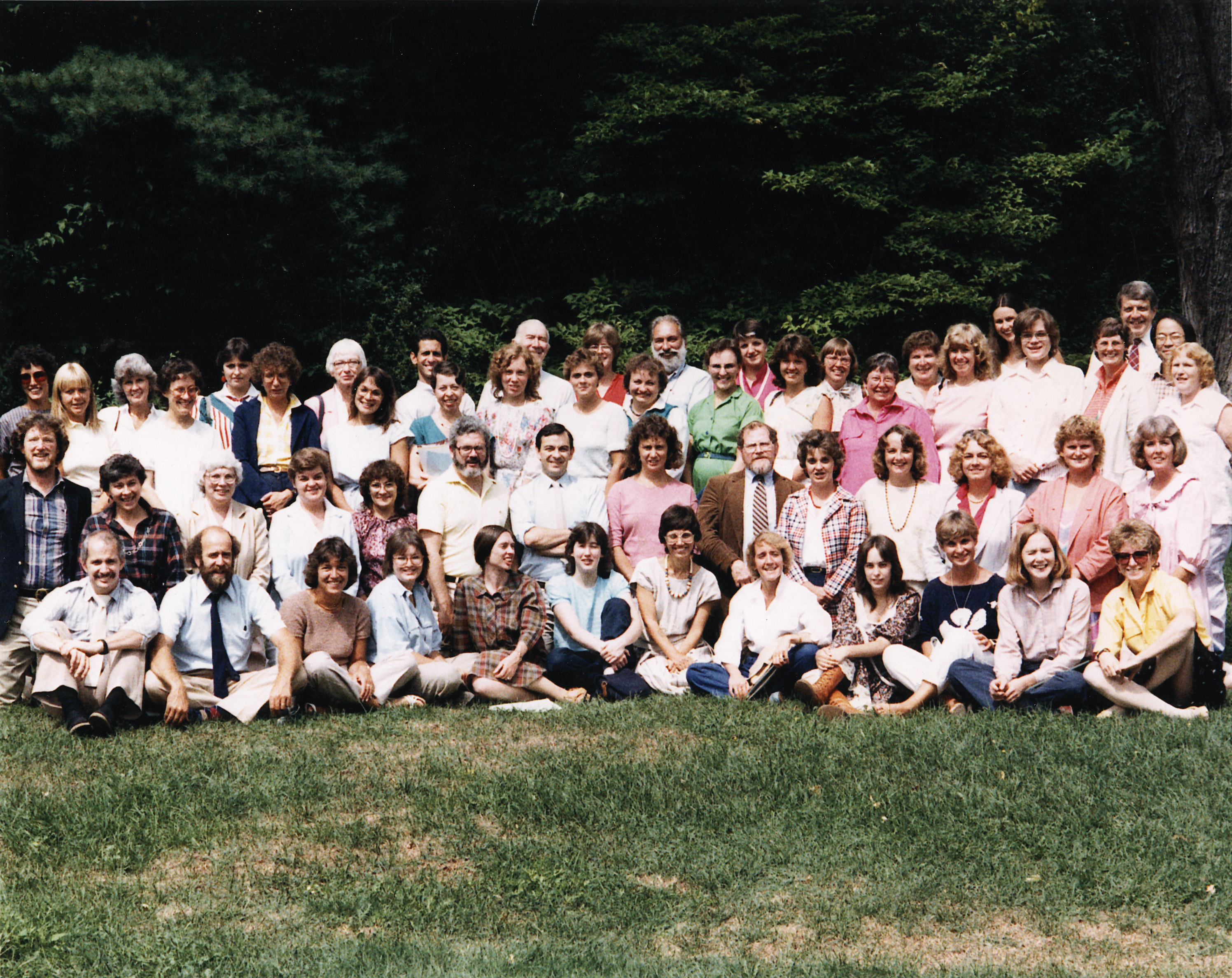
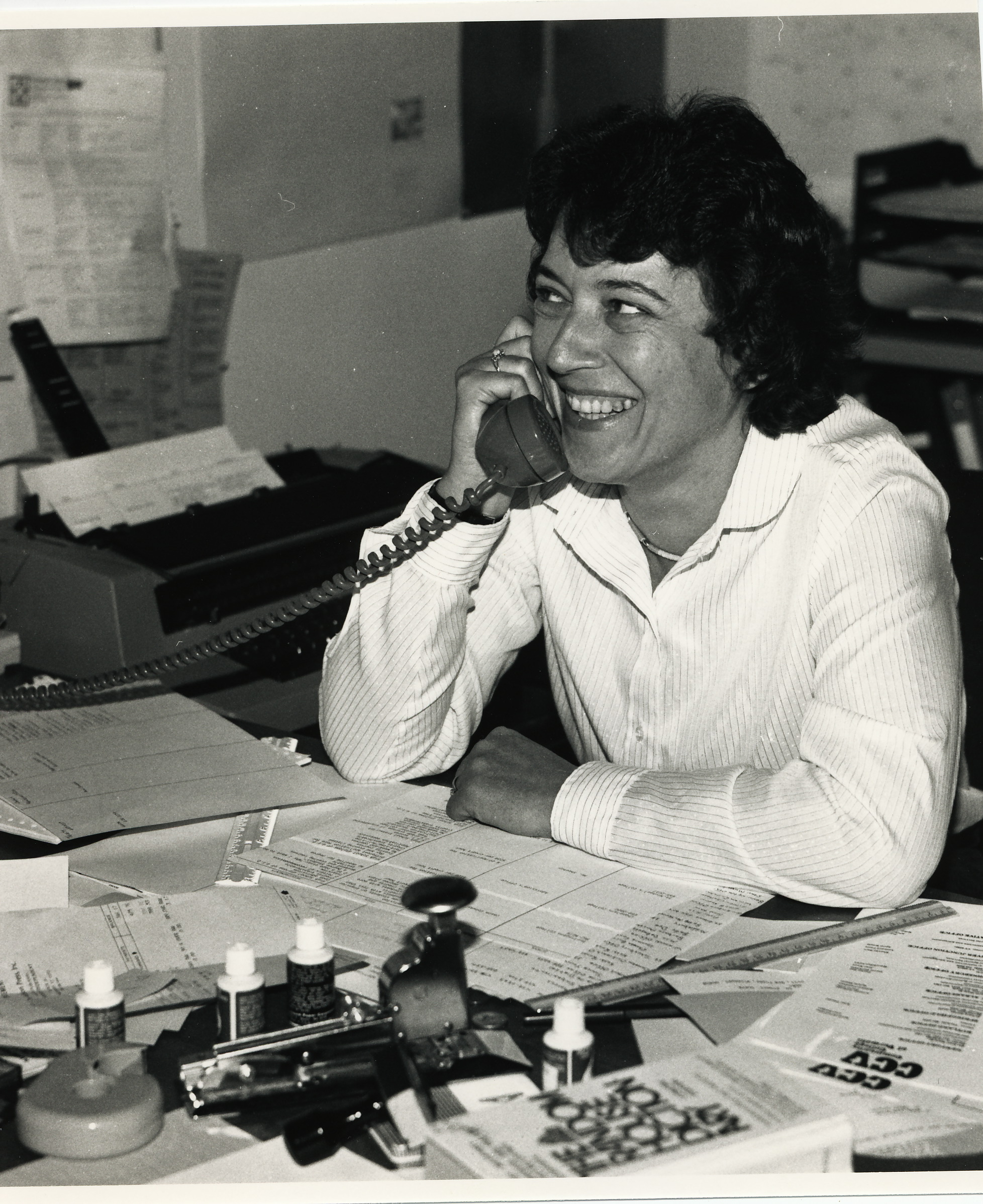
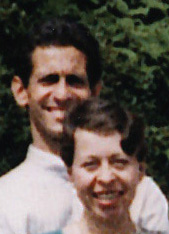
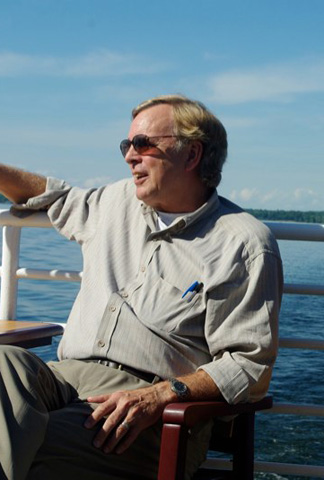
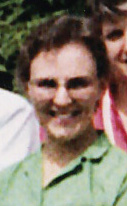
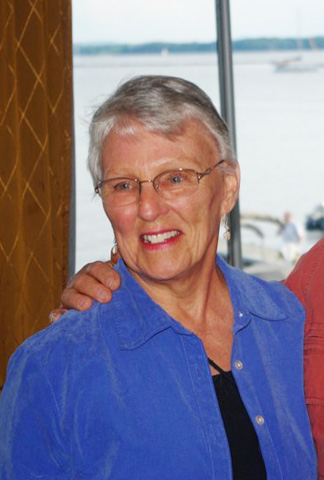 David Buchdahl and Ellie Byers in St. Albans (1983). Carol Braswell, Leonard Foote, Theresa Lermond, Terry Knight, Michael Murphy, Carol Peterson and Barbara Ploof were gone. The Montpelier office was closed, and its staff moved to Barre. The St. Johnsbury office had new, spacious and cockroach-free accommodations. The Northern Region coordinators had prepared 450 courses for the fall of 1983, including three weekend courses and eight Johnson State College courses; and they had developed a two-year curriculum for the new, soon-to-be issued college catalog. Site secretaries were upgraded to Site Service Coordinators to reflect their increased computer and bookkeeping responsibilities. A large percent of our enrollment was in computer courses.
David Buchdahl and Ellie Byers in St. Albans (1983). Carol Braswell, Leonard Foote, Theresa Lermond, Terry Knight, Michael Murphy, Carol Peterson and Barbara Ploof were gone. The Montpelier office was closed, and its staff moved to Barre. The St. Johnsbury office had new, spacious and cockroach-free accommodations. The Northern Region coordinators had prepared 450 courses for the fall of 1983, including three weekend courses and eight Johnson State College courses; and they had developed a two-year curriculum for the new, soon-to-be issued college catalog. Site secretaries were upgraded to Site Service Coordinators to reflect their increased computer and bookkeeping responsibilities. A large percent of our enrollment was in computer courses.

